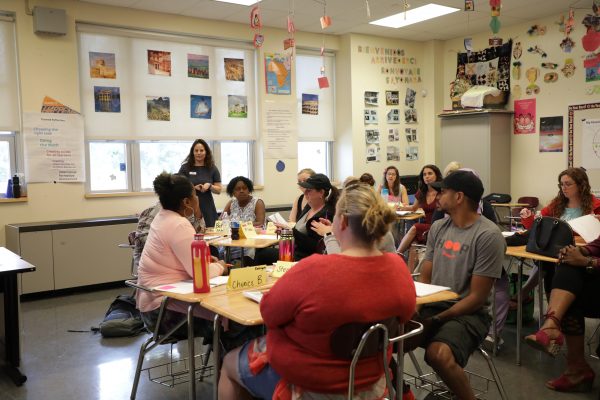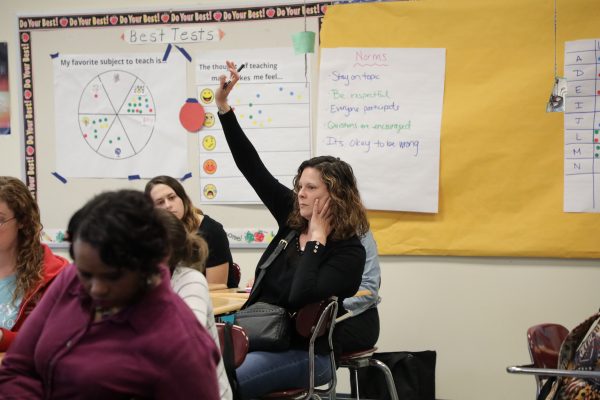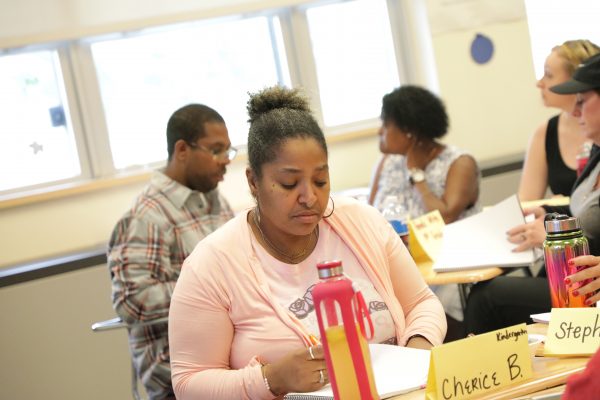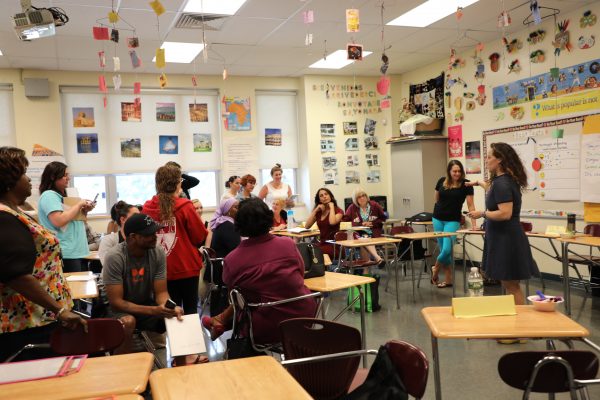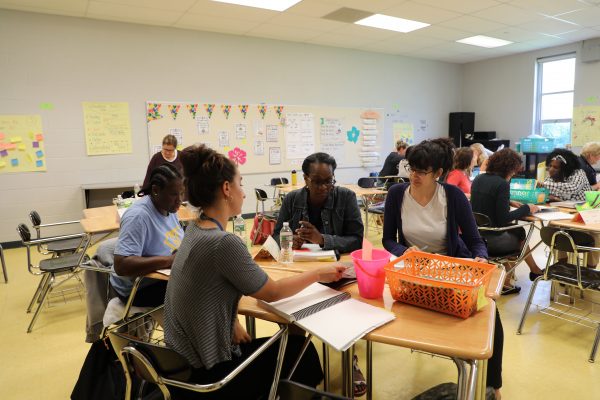Setting High Expectations
Created by Theresa Capecci | - K-12 teachers
- Teachers who could benefit from the opportunity to reflect on the expectations they hold and set for their students
- Teachers who want to learn concrete strategies for raising expectations in their classroom.
| - Describe the connection between teacher expectations and student performance
- Brainstorm ways you can communicate high expectations to your students
- Reflect on current practices to determine whether we are setting our expectations high enough for students.
| 2b: Establishing a Culture for Learning
3c: Engaging Students in Learning
|
Building Reading Routines
Created by Jess Jaecks | - K-3 ELA Teachers
- Beginning teachers who need to establish routines around reading at the beginning of the year
- Teachers who are struggling with establishing reading routines
- Teachers who need to increase active engagement during reading
- Teachers who are struggling with reading routines and need to reset and reteach reading routines during the year
| - Name 2-3 routines to add to your reading instruction
- Practice teaching the reading routines in an upcoming lesson
| 2c Managing Classroom Procedures
3a Communicating with Students
3c Engaging Students in Learning |
Positive Narration
Created by Jenn Schneider | - K-12 teachers
- Teachers who want/need to work on fostering positive rapport with students
- Teachers who need a refresher on why using positive narration can set the tone for student success
- Teachers who need to see a model of positive narration
- Teachers who are looking to make an easy yet impactful adjustment to their classroom management tools
| - Explain when to use positive narration and why it's an effective management tool
- Practice executing positive narration after giving directions
| 2d: Managing Student Behavior
3a: Communicating with Students |
Attention Getters
Created by Rachel Kuck | - K-12 teachers
- New teachers or those struggling with classroom management.
- Experienced teachers who want to refresh their management strategies.
|
- Identify the attention getting signal describe what having students’ attention looks like/sounds like.
- Practice executing the attention-getter and monitoring to check for student compliance
| Domain 2: The Classroom Environment |
Teaching Routines
Created by Catherine Clever | - K-12 teachers (three different decks depending on grade band)
- Beginning or struggling teachers who need support in setting up routines at the beginning of the year
- Teachers who lack coherent routines in their classroom and need support during the year
- Teachers who are struggling with routines and need to reset and reteach routines during the year
| - Identify the steps for teaching routines within various classroom video clips
- Apply the steps for teaching routines by planning a routine (or routine reset) in their own classroom
- Practice executing the steps for teaching routines
| Domain 2: The Classroom Environment |
Building a Positive Classroom Culture, Grades K-3
Created by Lisa Sandner | - K-3 teachers
- Teachers who are struggling to build a positive culture within their classroom.
- Experienced teachers looking for fresh ideas for building a community within the classroom.
| - Describe why positive classroom culture is the all-important foundation for strong instruction
- Identify ways to build relationships with and between students
- Plan 1 way to build and/or improve positivity in your classroom in the next two weeks
| Domain 2: The Classroom Environment |
Building a Positive Classroom Culture, Grades 9-12
Created by Sharon Connelly-Menotiades | - High school teachers
- This module is designed for newer teachers, however, veteran teachers can also reflect on their classroom culture and may find some of the strategies and resources helpful.
- Best delivered at the start of the school year, but can also serve as a refresher when teachers need a “reset” later in the school year
| - Describe why positive classroom culture is the all-important foundation for strong instruction
- Identify ways to build relationships with and between students
- Plan 3 ways to build and/or improve positivity in your classroom in the next two weeks
| Domain 2: The Classroom Environment |
Teaching Vocabulary, Grades K-3
Created by Lisa Sandner | - K-3 literacy teachers
- Teaches who are looking for strategies for teaching vocabulary
- Teachers who need support in incorporating vocabulary instruction into their literacy block
- Teachers of other content areas interested in incorporating and strengthening vocabulary instruction
| - Identify 1-2 strategies for teaching vocabulary skills
- Embed at least one new strategy for teaching vocabulary in an upcoming lesson
| Domain 3: Instruction |
Teaching Vocabulary, Grades 4-8
Created by Fran Schmuckler | - 4-8 teachers
- Teachers who may be directly teaching specific words but not teaching word solving strategies
- Teachers who want to amplify their vocabulary instruction
- Teachers who need support in identifying and teaching the types of context clues
| - Identify the types of context clues within attached material and video clips
- Apply the steps for teaching the types of context clues by planning a lesson in their own classroom
- Practice executing the steps for teaching the types of context clues
| Domain 3: Instruction |
Using Questions to Facilitate Learning
Created by Theresa Capecci | - K-12 teachers
- Teachers who need support in increasing classroom rigor and developing high level questions.
- Teachers struggling with active student engagement during instruction.
- Teachers who want to bring more student discourse into their classrooms.
| - Describe the connection between effective teacher facilitation and building student independence
- Name 2-3 strategies you can use to successfully facilitate student learning through questioning
- Embed questioning strategies into an upcoming lesson
| 3b: Using Questioning and Discussion Techniques |
Checking for Understanding
Created by Theresa Capecci and Jenn Schneider | - K-12 teachers
- Beginning or struggling teachers who need support in checking for student understanding
- Teachers who lack an efficient system for collecting formative student data
| - Describe the purpose of Checks for Understanding
- Name 2-3 different in-lesson assessment strategies
- Embed at least two assessment strategies in an upcoming lesson
| 3a: Communicating with Students
3b: Using Questioning and Discussion Techniques
3c: Engaging Students in Learning |
Engagement to Build Independence
Created by Christy Ashaba | - K-12 teachers
- Teachers who struggle to intellectually engage all learners
- Teachers who plan lessons that are below grade-level/low rigor
- Teachers who do most of the thinking and/or talking during a lesson
- Teachers who do not check for understanding or provide feedback during lesson
| - Explain why shifting the cognitive load onto students is important.
- Name 2-3 engagement strategies that help to shift the cognitive load.
- Embed at least one engagement strategy in an upcoming lesson.
| 3c: Engaging Students in Learning |
